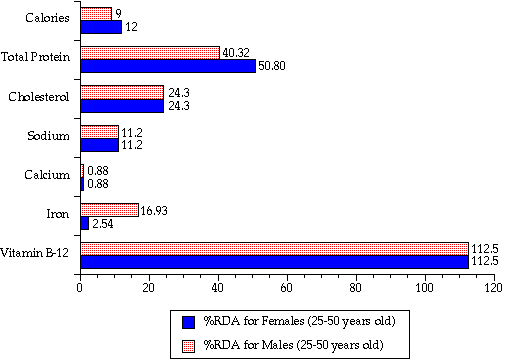|
Building Blocks of LifeArticle submission, Thursday 14th December 2006
In
nutrition essentials
we covered the food group's. Now lets look at the actual building blocks contained in those. These are the tools cells use to function optimally, plus they are also used to perform the many complex chemical reactions needed to maintain optimal health. The easiest way to think of a cell is as a tiny factory wherein the DNA inside the nucleus contains the complete `blueprint' or set of instructions which facilitates this process. They can be broken down into 4 separate Categories:
Vitamins Vitamins contain no calories yet are vital for normal growth and development and as adults they are used to maintain our physiology. Much like the rest of the essentials, vitamins also work synergistic ally with one another acting as catalysts working with amino acids, sugars, phosphates and even on other vitamins without changing themselves, so in essence they are `molecular tools'. For the most part we need to ingest daily requirements of vitamins, however vitamin K and biotin for example are produced by micro organisms called `gut flora' within the intestines whilst vitamin D is synthesized under the skin with the help of ultraviolet light. It is worthy of note here that humans are one of a small group of species that cannot self produce vitamin C.
They are split into 2 subgroups: Fat Soluble Vitamins Vitamins/function [A]: [beta-carotene] necessary for the production of rodpsin, a pigment crucial to eyesight and supporting immune system.
Fat solubles are transported around the blood stream via fat molecules, plus they can be temporarily stored in the fat as well as liver cells for short periods.
Vitamin/function [B1]: [thiamine] transmission of nerve signals along spinal cord. Water soluables are rapidly expelled from the body and must be replaced on a daily basis.

Minerals
While it has been stated that the body can produce some of its own vitamins, for inorganic minerals this is not the case.They are easily divided into 2 groups macro-minerals which we require more than 100 mg a day and micro or trace minerals which we require less than 100 mg a day.
The most common and easily the most important are listed as follows:
Calcium: In early development calcium is responsible for building strong bones and teeth, its other importances include regulating heart rhythm, helping nutrients pass through cell membranes, lowering blood pressure and is vital for good kidney functioning.
Magnesium: Responsible for converting blood sugar into energy along with metabolizing calcium and vitamin C, and maintaining the neuromuscular activity of the heart.
Iron: Main function is in hemoglobin production by combining protein and copper, which is vital for the transference of oxygen molecules to the cells, also responsible for myoglobin production which moves oxygen to muscle cells necessary for contraction.
Iodine: Important in the development and functioning of the thyroid gland through thyroxine formation (a thyroid gland hormone).
Copper: Important for the absorption and utilization of iron, helps oxidize vitamin C which it works with also to form elastin a chief component of muscle fibres.
Zinc: Important antioxidant component which assists with digestion and metabolism of phosphorus, maintains blood alkaline balance and vital for reproductive organs, plus it plays a vital role against disease and infection.
Selenium: A major antioxidant responsible for slowing down the age process and hardening of the arteries through oxidation, plus it plays a major role in maintaining elasticity in skin tissue.
Silicon: Is essential for the growth of skin, hair shaft, nails, it also plays a role in the hardening of teeth enamel as well as being involved in the healing processes.
Fluorine: Is an element that prevents diseases from decaying the body acting as a germicide,
Manganese: necessary for the metabolism of Vitamin B1 and E, as an antioxidant nutrient it is also responsible for the breakdown of amino acids and the production of energy.
Chromium: Works with insulin in the metabolism of sugar and stabilizing blood sugar levels, cleans arteries by reducing cholesterol levels, assists in reducing high blood pressure.
Potassium Works in conjunction with sodium to stimulate the kidneys to remove toxic body waste, and helps regulate PH levels in the system.
There are many other trace minerals or inorganic nutrients that the body uses which all work with the others to achieve correct functioning.
Building blocks of life - part 2 Back to Site articles The Office of Dietry Supplements
is an excellent resource on vitamins and minerals.
YoungBodyMind - An antiaging community to empower your ageless body and mind, based on PingLongevity antiaging protocols.


|




